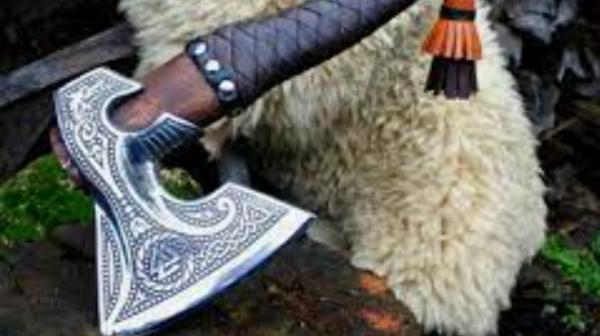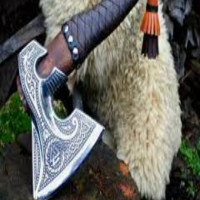Rethinking the Legend: Reassessing the Role of Viking Axe in Battle and Everyday Life

Strong 8k brings an ultra-HD IPTV experience to your living room and your pocket.
Introduction
The Viking axe is often depicted as a fearsome weapon wielded by formidable Norse warriors. While its image in pop culture is iconic, the true history and role of the Viking axe are more nuanced. This article delves into the historical and practical significance of Viking axes, rethinking their legendary status.
The Iconic Image of the Viking Axe
Popular media often portrays Viking axes as colossal, menacing tools of destruction. But how accurate is this image? Let's explore the true nature of these axes and their place in Viking society.
Historical Context of Viking Axes
Viking axes were used during the Viking Age, approximately 793-1066 AD. They were essential tools in both combat and daily activities. Understanding the historical context helps us appreciate their multifaceted roles.
Types of Viking Axes
There were several types of Viking axes, each with unique features and purposes. Common types include the bearded axe and the Dane axe. Knowing these types can help us understand how Vikings used them in different scenarios.
Materials and Craftsmanship
Viking axes were typically made from iron, with some high-quality examples featuring steel edges. The craftsmanship involved in creating these axes was intricate and often passed down through generations. This craftsmanship contributed to their effectiveness and durability.
Symbolic Significance of Viking Axes
Beyond their practical uses, Viking axes held symbolic meanings. They were often intricately decorated, reflecting their owner's status and beliefs. Some axes were even buried with their owners, signifying their importance.
Viking Axes in Battle
In battle, Viking axes were formidable weapons. Their design allowed for powerful strikes and versatility in combat. However, not all Viking warriors used axes; many preferred swords or spears. Exploring their use in warfare provides a balanced view of their effectiveness.
Viking Axes in Everyday Life
Outside of combat, Viking axes were invaluable tools for daily tasks such as woodcutting and construction. Their utility in everyday life was just as important as their role in warfare, showcasing the versatility of these tools.
Comparisons with Other Viking Weapons
While axes were popular, they were not the only weapons in a Viking's arsenal. Comparing axes with swords, spears, and bows highlights their unique advantages and limitations. This comparison helps us understand why axes were favored in certain contexts.
Archaeological Evidence of Viking Axes
Archaeological finds have provided significant insights into the use and development of Viking axes. Examining these discoveries can help us distinguish between myth and reality, shedding light on their true historical roles.
Viking Axes in Norse Mythology
Norse mythology often features axes as powerful symbols and weapons of the gods. Exploring these mythological references reveals the cultural importance of axes and their impact on Viking identity.
Cultural Impact and Modern Interpretations
The legacy of Viking axes continues to influence modern culture, from movies to historical reenactments. Understanding how these interpretations shape our perception of Viking history is crucial in reassessing their legendary status.
Debunking Myths and Misconceptions
Many myths and misconceptions surround Viking axes, often fueled by popular media. Debunking these myths helps us appreciate the true nature and significance of these tools in Viking life.
Preservation and Display of Viking Axes
Preserving Viking axes is essential for maintaining historical integrity. Museums and collectors play a crucial role in this effort, ensuring that these artifacts are displayed and interpreted accurately.
Conclusion
Reassessing the role of Viking axes reveals their complexity as both tools and symbols. While they were indeed formidable in battle, their everyday utility and cultural significance are equally important. Understanding these facets provides a more comprehensive view of Viking history.
Note: IndiBlogHub features both user-submitted and editorial content. We do not verify third-party contributions. Read our Disclaimer and Privacy Policyfor details.


